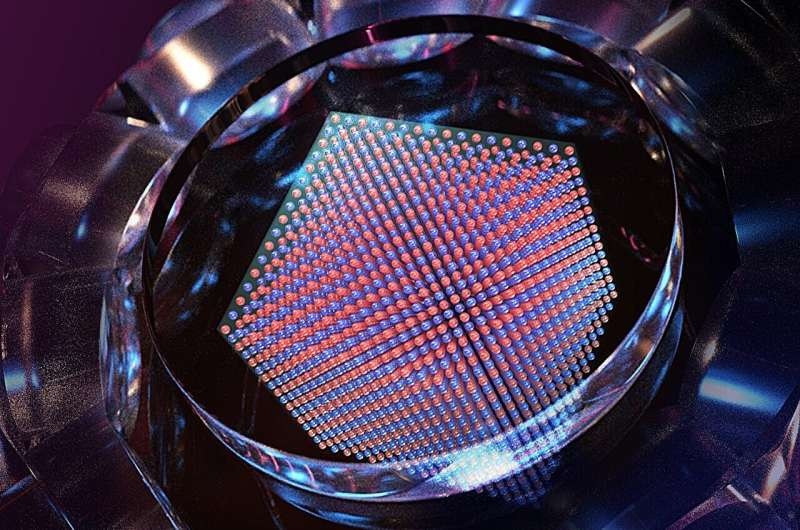In a groundbreaking study, researchers have observed the antiferromagnetic phase transition within a large-scale quantum simulator of the fermionic Hubbard model, marking a significant step towards understanding the mechanism behind high-temperature superconductivity.

Revealing the Secrets of Quantum Magnetism
High-temperature superconductors are just one example of a strongly correlated quantum material, and they have captured researchers’ imaginations for decades as a result of the potential economic impact from its use. Yet the physical mechanisms that cause these novel materials to work have been poorly understood, which has impeded their broad-scale synthesis and usage.
The fermionic Hubbard model (FHM) provides a minimal description of electrons in a lattice and naturally captures much of the physics associated with strong correlations, as observed for instance in quantum materials. Scientists think an understanding of the FHM is probably also the key to unlocking high-temperature superconductivity.
Regrettably, the FHM has proven an elusive subject of study. There is no precise analytical solution for this model in two and three dimensions, and even advanced numerical methods are unable to explore the entirety of the phase diagram. Nonetheless, one learns from theoretical studies that an exact solution of this model would not even be possible on a universal digital quantum computer.
This is where quantum simulation using ultracold fermionic atoms in optical lattices provides a better alternative. The realization of the antiferromagnetic phase transition and the ground state of the FHM at half-filling, can help to demonstrate in a compelling way all essential features that quantum simulators should have, being applied to explore more aspects within low-temperature phase diagram of the FHM and such as also on the role played by quantum magnetic fluctuations in high-TC superconductivity mechanism.
Quantum simulation makes major breakthrough
Researchers from the University of Science and Technology of China (USTC) and the Chinese Academy of Sciences introduced a groundbreaking quantum simulator tailored to overcome the inherent challenges in cooling fermionic atoms and compensate for the inhomogeneity results from an ordinary Gaussian-profile lattice laser.
The authors achieve this by generating a low-temperature homogeneous Fermi gas in a box trap and demonstrating the flat-top optical lattice, which is required to realize uniform Hamiltonian parameters, and temperature far below the Néel temperature (antiferromagnetic phase transition temperature).
The quantum simulator comprises around 800,000 sites on a lattice — some four orders of magnitude more than existing few dozen site experiments with the FHM, enabling the simulator to explore much broader sets of bases.
Through systematic tuning of the interaction strength, temperature and doping concentration, the research team were able to reach close enough to their critical values that decisive evidence for the existence of antiferromagnetic phase transitions was obtained directly. The power-law divergence of the spin structure factors they observed had a critical exponent close to 1.396 (the Heisenberg universality) as well.
This outstanding result not only contributes to the theoretical understanding of quantum magnetism but also opens up a way for us to go further in solving the FHM, and obtaining its finite-T phase diagram. In particular, the results from experiments away from half filling have already outstripped what can be done classically today, providing a novel demonstration of the potential of quantum emulation to study important scientific problems.
Conclusion
The large-scale quantum simulator of the fermionic Hubbard model was realized in a two-dimensional optical lattice, and the observation of the antiferromagnetic phase transition represents an important step towards revealing the mysteries behind high-temperature superconductivity. These challenges of cooling fermionic atoms and creating a homogeneous optical lattice have been met for the first time, allowing the research team to explore further into low-temperature phase diagram of FHM, as well as the quantum magnetism in these complex quantum materials. This discovery is about more than just offering the scientific community a stepping-stone toward expanding our knowledge of these systems; if refined, the principles behind this discovery could open a door to new modes for designing and using high-temperature superconductors in many sectors.
